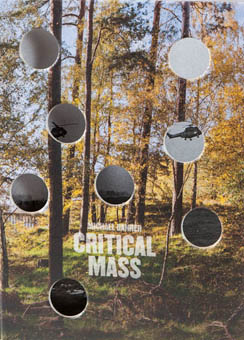Michael DANNER


This post is also available in:
 French
French
Michael Danner documente au sein de son travail Critical Mass l’architecture, la routine quotidienne et les systèmes de sécurité de l’ensemble des dix-sept centrales nucléaires allemandes, ainsi que de l’entrepôt de stockage des déchets radioactifs Asse II et de la mine “exploratoire” de Gorleben. De grands espoirs aussi bien qu’un profond scepticisme ont accompagné le développement de l’énergie nucléaire jusqu’à aujourd’hui. Dans l’ambiance euphorique qui prévalait dans les années 50, tout semblait possible ; les gens étaient engagés dans un redressement économique sans précédent et pensaient que le nucléaire était une fascinante technologie pour le futur. Mais dans les années 80, l’optimisme des années de boom laissa place à un certaine défiance qui prit de l’importance avec la catastrophe de Tchernobyl. L’activisme anti-nucléaire a maintenant influencé la conscience politique de toute une génération. Et le désastre de Fukushima en 2011 a annoncé une nouvelle phase dans le débat — il semble qu’un renoncement à cette énergie à moyen terme soit inévitable. Le problème de l’élimination des déchets radioactifs n’est cependant toujours pas résolu.
Michael Danner documents in his body of work Critical Mass the architecture, everyday routine, and security systems of all 17 German nuclear power plants, as well as the radioactive waste repository Asse II and the Gorleben exploratory mine. High hopes and deep skepticism have accompanied the use of nuclear power up to the present day. In the euphoric mood that prevailed in the 1950s, everything seemed possible; people took part in an unprecedented economic upswing and found nuclear energy to be a fascinating technology of the future. But in the 1980s the optimism of the years of boom gave way to a skepticism that was further fueled by the catastrophic nuclear accident in Chernobyl. Anti-nuclear activism has now shaped the political consciousness of a whole generation. And the disaster in Fukushima in 2011 heralded yet a new era in the debate – it seems that a nuclear phase-out in the medium-term is now inevitable. However, the issue of the final disposal of radioactive waste is still unresolved. Danner’s pictures give us a rare glimpse behind the scenes of the power plants, showing areas that are normally off-limits. His series is accompanied by historical photographs and texts that document the planning and construction phases of the plants and visualize the social tensions. The layout of the book and the cut through the front cover refer to the interaction of the present time and the past and the conflict between nuclear power opponents and the authorities.
Michael Danner documents in his body of work Critical Mass the architecture, everyday routine, and security systems of all 17 German nuclear power plants, as well as the radioactive waste repository Asse II and the Gorleben exploratory mine. High hopes and deep skepticism have accompanied the use of nuclear power up to the present day. In the euphoric mood that prevailed in the 1950s, everything seemed possible; people took part in an unprecedented economic upswing and found nuclear energy to be a fascinating technology of the future. But in the 1980s the optimism of the years of boom gave way to a skepticism that was further fueled by the catastrophic nuclear accident in Chernobyl. Anti-nuclear activism has now shaped the political consciousness of a whole generation. And the disaster in Fukushima in 2011 heralded yet a new era in the debate – it seems that a nuclear phase-out in the medium-term is now inevitable. However, the issue of the final disposal of radioactive waste is still unresolved. Danner’s pictures give us a rare glimpse behind the scenes of the power plants, showing areas that are normally off-limits. His series is accompanied by historical photographs and texts that document the planning and construction phases of the plants and visualize the social tensions. The layout of the book and the cut through the front cover refer to the interaction of the present time and the past and the conflict between nuclear power opponents and the authorities.


